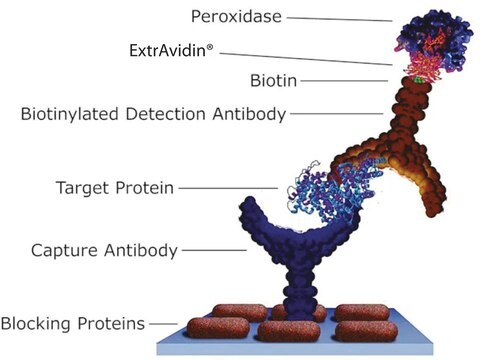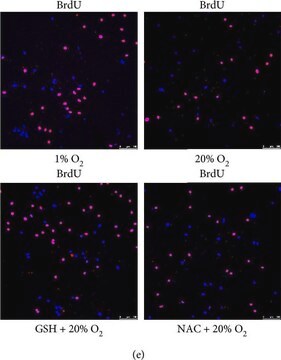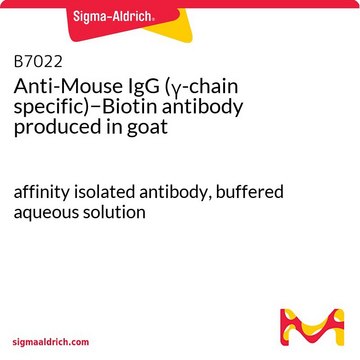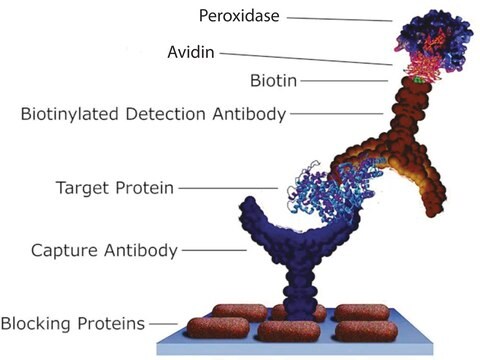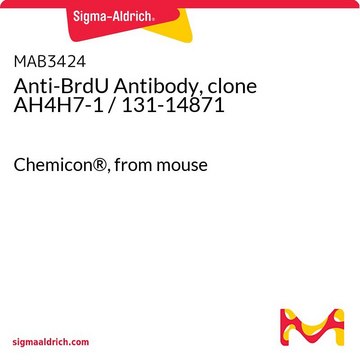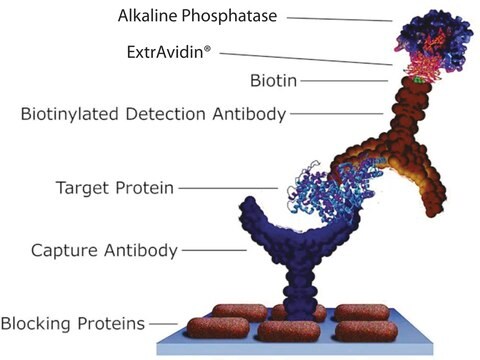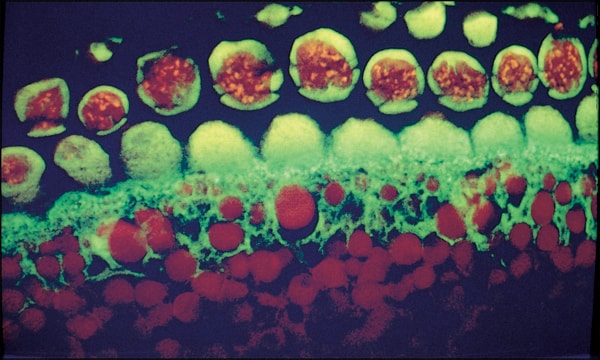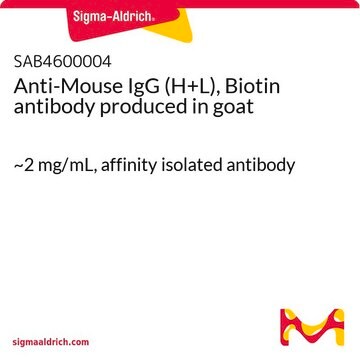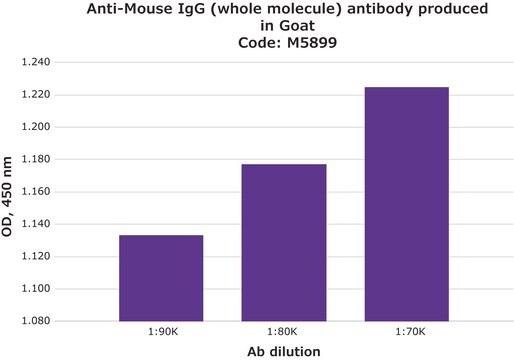B6649
Anti-Mouse IgG (whole molecule)−Biotin antibody produced in goat
affinity isolated antibody, buffered aqueous solution
Sign Into View Organizational & Contract Pricing
All Photos(1)
About This Item
Recommended Products
biological source
goat
Quality Level
conjugate
biotin conjugate
antibody form
affinity isolated antibody
antibody product type
secondary antibodies
clone
polyclonal
form
buffered aqueous solution
technique(s)
direct ELISA: 1:20,000
storage temp.
2-8°C
target post-translational modification
unmodified
Looking for similar products? Visit Product Comparison Guide
General description
The product binds all mouse Igs.
Application
Anti-Mouse IgG (whole molecule) antibody produced in rabbit is suitable for ELISA at a working dilution of 1:20,000. It may be used for immunohistochemistry of formalin-fixed, paraffin-embedded sections at a dilution of 1:1000.
Biochem/physiol Actions
IgG antibody subtype is the most abundant of serum immunoglobulins of the immune system. It is secreted by B cells and is found in blood and extracellular fluids and provides protection from infections caused by bacteria, fungi and viruses. Maternal IgG is transferred to fetus through the placenta that is vital for immune defense of the neonate against infections. The coupling of biotin to Anti-Mouse IgG antibody allows for the binding of various labels such as avidin or streptavidin.
Other Notes
Antibody adsorbed with human serum proteins.
Physical form
Solution in 0.01 M phosphate buffered saline pH 7.4, containing 1% bovine serum albumin and 15 mM sodium azide.
Preparation Note
Adsorbed to reduce background with human samples.
Disclaimer
Unless otherwise stated in our catalog or other company documentation accompanying the product(s), our products are intended for research use only and are not to be used for any other purpose, which includes but is not limited to, unauthorized commercial uses, in vitro diagnostic uses, ex vivo or in vivo therapeutic uses or any type of consumption or application to humans or animals.
Not finding the right product?
Try our Product Selector Tool.
Storage Class
10 - Combustible liquids
wgk_germany
nwg
flash_point_f
Not applicable
flash_point_c
Not applicable
Choose from one of the most recent versions:
Already Own This Product?
Find documentation for the products that you have recently purchased in the Document Library.
Customers Also Viewed
M I Napp et al.
International journal of developmental neuroscience : the official journal of the International Society for Developmental Neuroscience, 18(6), 531-544 (2000-07-08)
Subcultured astroglial cells from striatum, cerebral cortex and ventral mesencephalon obtained from primary cultures of fetal (E14, E17 and E21) or postnatal (days 5-6) rats showed different regional, age-dependent morphological response (stellation) to cyclic AMP. While most of the cerebral
Carolina Veaute et al.
Fertility and sterility, 91(4), 1256-1268 (2008-04-29)
To assess the effect of antiacrosin antibodies upon proacrosin/acrosin activities and animal fertility. Prospective study. Basic research laboratory. A gene immunization (GI) model was developed; mice were injected with the sequence encoding human proacrosin (h-proacrosin), cloned in an expression vector.
F Lefèvre et al.
Experimental cell research, 271(1), 84-93 (2001-11-08)
Metabolic functions of fibroblasts are tightly regulated by the extracellular environment. When cultivated in tridimensional collagen lattices, fibroblasts exhibit a lowered activity of protein synthesis, especially concerning extracellular matrix proteins. We have previously shown that extracellular collagen impaired the processing
Marieta Ruseva et al.
Immunology, 127(2), 279-288 (2009-05-30)
Mannan-binding lectin (MBL) is a plasma protein implicated in innate immune defence against a broad range of microorganisms, including viruses. It is also thought that MBL plays a role in the recruitment of the specific clonal immune response. This was
Elaine Mo Hayes et al.
Frontiers in immunology, 5, 537-537 (2014-11-13)
Rupture of advanced atherosclerotic plaques accounts for most life-threatening myocardial infarctions. Classical (M1) and alternative (M2) macrophage activation could promote atherosclerotic plaque progression and rupture by increasing production of proteases, including matrix metalloproteinases (MMPs). Lymphocyte-derived cytokines may be essential for
Our team of scientists has experience in all areas of research including Life Science, Material Science, Chemical Synthesis, Chromatography, Analytical and many others.
Contact Technical Service